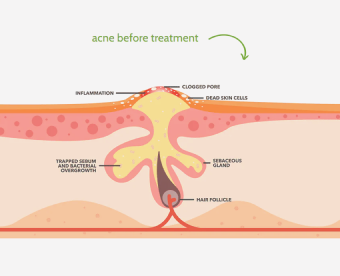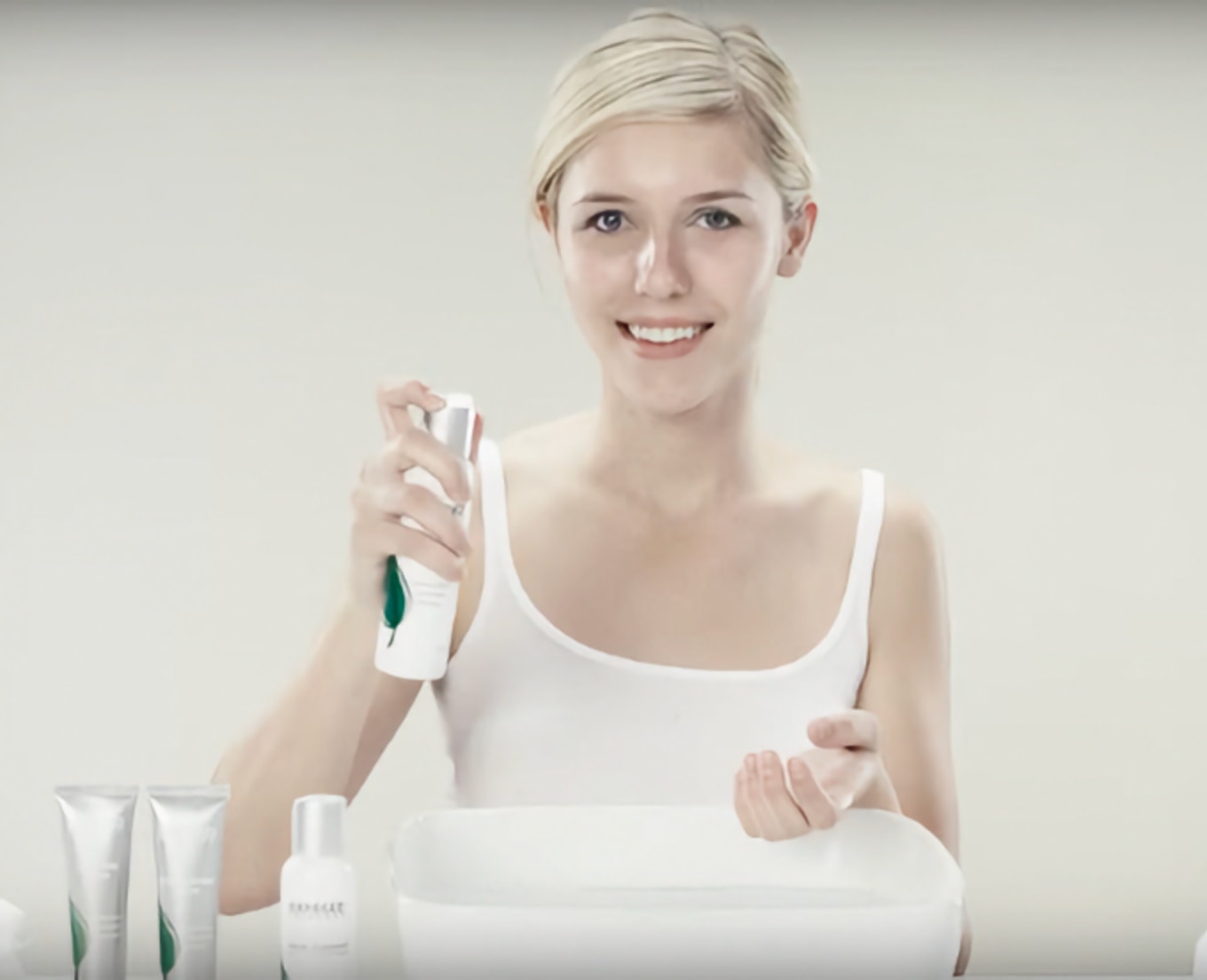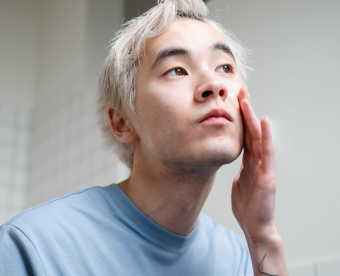When you're faced with a painful cystic acne breakout, it can be tempting to try to pop it, but you should resist the urge. Popping cystic acne can lead to severe infections, permanent scarring, and prolonged healing times, making your skin condition worse. Instead, consider alternative treatments that can safely and effectively manage cystic acne.
Applying a warm compress can reduce swelling, while over-the-counter treatments with benzoyl peroxide or salicylic acid can target bacteria. By exploring these alternatives, you can take the first step towards finding a solution that works for your skin, and discover a clearer path forward.

Biggest Takeaways
- Popping cystic acne can lead to severe infections as bacteria spread to surrounding skin.
- Prescription-strength treatments are often necessary for severe cases of cystic acne.
- Regular skincare routines and avoiding harsh scrubs promote healing.
- Over-the-counter treatments with benzoyl peroxide or salicylic acid can target bacteria.
- Consulting a dermatologist for steroid injections can provide rapid pain relief and prevent scarring.
- Exposed Kit offers a comprehensive approach with its specially formulated products that combine powerful ingredients to help treat cystic acne and prevent future breakouts.
Understanding Cystic Acne

Understanding cystic acne starts with recognizing its distinct characteristics. You'll notice large, red lumps deep beneath your skin, which are painful and unsightly. These occur when clogged pores, filled with oil, dead skin cells, and bacteria, become severely inflamed.
As someone experiencing cystic acne, you're likely aware of its risks, including scarring and infection. This severe type of acne often coincides with hormonal fluctuations, which can make it challenging to manage.
While it's natural to seek quick fixes, understanding the condition is essential for effective treatment. Instead of relying on over-the-counter options, you'll likely need prescription medications to address the root causes.
Causes of Cystic Acne
-
Acne is a common skin condition affecting individuals of all ages, from adolescence to adulthood.
-
Multiple factors contribute to acne, including hormones, genetics, diet, and medical conditions.
-
Hormonal changes during puberty significantly increase oil production, leading to acne prevalence.
-
Skin bacteria growth plays a role in acne development, and stress can trigger hormonal fluctuations that worsen acne.
-
The emotional impacts of acne can affect self-esteem and mental health, particularly in teenagers.

Risks of Popping Cystic Acne

Now that you know what causes cystic acne, it's equally important to understand the potential risks of trying to get rid of it on your own. Popping cystic acne can lead to severe infections as bacteria from the cyst spread to surrounding skin, exacerbating the condition.
Dermatologists can provide prescription medications for acne, including topical and oral treatments like retinoids and hormonal therapies aggressive treatment plans. These treatments can be effective for severe acne symptoms, but also come with a risk of side effects.
You also risk scarring, which can be permanent and leave noticeable marks like icepick or boxcar scars. Furthermore, popping cysts can delay the healing process, prolonging the duration of the acne and increasing inflammation. This can even trigger further breakouts, clogging nearby pores and leading to more lesions.
To minimize these risks, professional treatment from a dermatologist is recommended. They can offer corticosteroid injections or drainage, safely managing the condition and promoting a smoother healing process.
Alternatives to Popping Cystic Acne
Alternatives to popping cystic acne provide safer options for managing inflammation and promoting healing. The application of a warm compress can reduce swelling and stimulate blood flow to the area.
Over-the-counter treatments containing benzoyl peroxide or salicylic acid can target bacteria and inflammation without the risks of self-extraction. Regular skincare routines and avoiding harsh scrubs can prevent irritation and promote healing of existing cysts.
Consulting a dermatologist for potential steroid injections can offer rapid pain relief while minimizing scarring and infection risks. Furthermore, ice packs can offer temporary relief from pain associated with cystic acne.
These alternatives offer effective, safer solutions for managing cystic acne without the need for popping. By combining these alternatives with consistent skincare routines and avoiding harsh chemicals, individuals can effectively control cystic acne and enjoy healthier skin.
Effective Treatments for Cystic Acne

When it comes to managing cystic acne, over-the-counter treatments and home remedies may not be enough. You'll likely need prescription-strength treatments to tackle the severity of your cystic acne.
Your dermatologist may prescribe oral antibiotics or topical retinoids to help reduce inflammation and kill bacteria. Benzoyl peroxide and salicylic acid are common topical treatments that can also help.
For more severe cases, corticosteroid injections can provide quick relief, while isotretinoin is a powerful systemic treatment that addresses multiple causes of cystic acne.
Regular dermatologist consultations will help you tailor a treatment plan and manage persistent cases effectively.
Don't hesitate to explore these effective treatments for cystic acne – your dermatologist will work with you to find the best approach for your skin.
With the right treatment, you can reduce inflammation and start seeing improvements.
Acne Solution with Exposed Skin Care

Numerous individuals struggling with cystic acne have found relief in Exposed Skin Care, an extensive treatment system that tackles this severe skin condition from multiple angles.
You'll appreciate how Exposed Skin Care's targeted approach harnesses the power of natural ingredients and scientifically proven formulas to combat cystic acne.
By incorporating products like gentle cleansers, exfoliating treatments, and spot treatments into your skincare routine, you'll be tackling inflammation and promoting healing.
Salicylic acid and benzoyl peroxide work together to unclog pores and eliminate acne-causing bacteria, yielding significant improvements.
By combining Exposed Skin Care with healthy lifestyle choices, you can prevent future breakouts and enjoy a clearer complexion.
With consistent use, you can join the many users who've reported reduced cystic acne and impressive results.
Putting It All Together
You've learned the risks of popping cystic acne and alternatives to manage it. You might be thinking, "But won't popping it just get rid of it faster?" Unfortunately, the temporary relief isn't worth the potential scarring, infection, and prolonged healing time. Instead, try effective treatments like topical retinoids, antibiotics, or hormonal therapies. With patience and the right approach, you can overcome cystic acne and achieve a clearer, healthier complexion. Stick to a consistent skincare routine and consult a dermatologist for personalized guidance.














